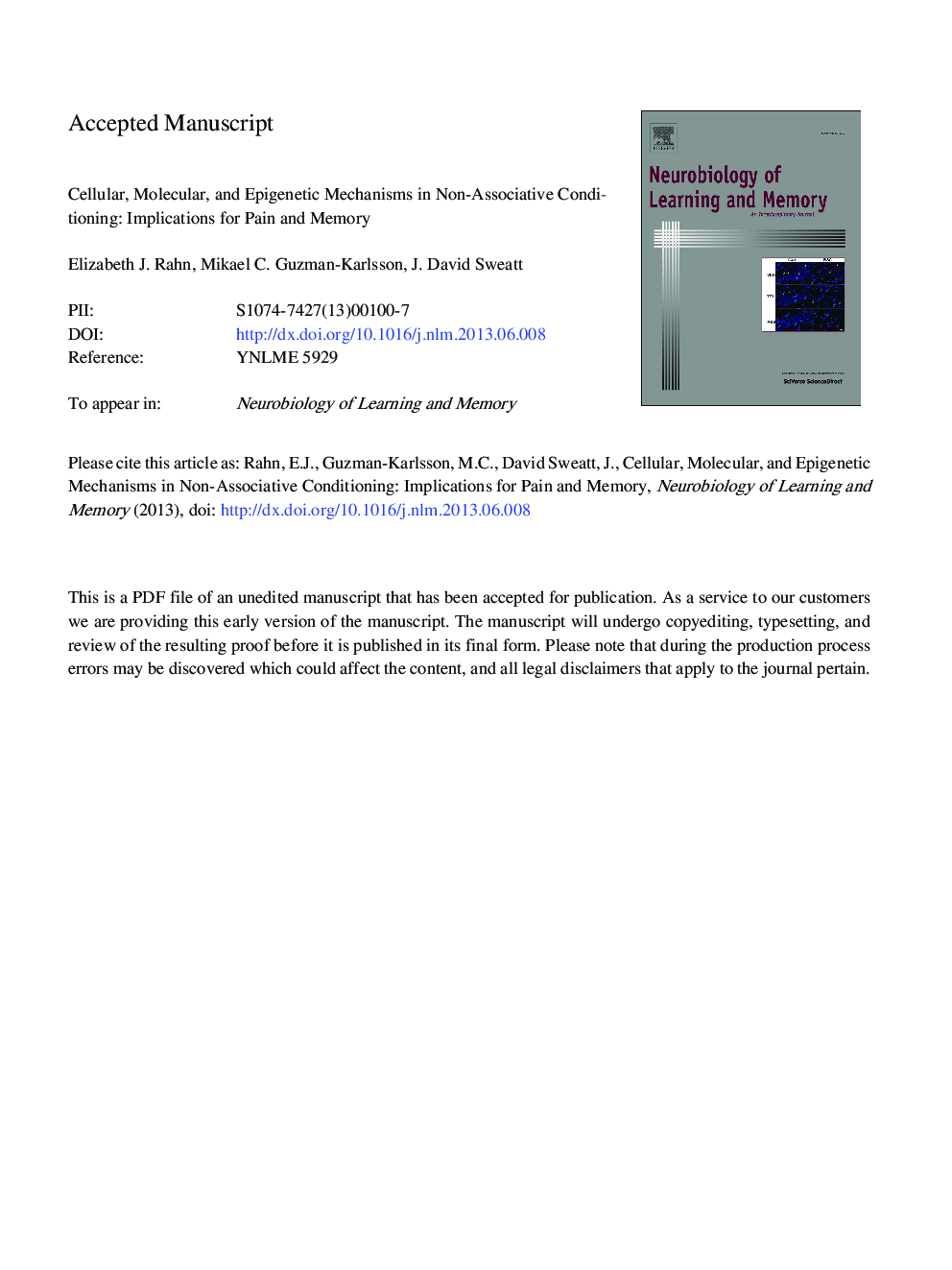| Article ID | Journal | Published Year | Pages | File Type |
|---|---|---|---|---|
| 7300493 | Neurobiology of Learning and Memory | 2013 | 69 Pages |
Abstract
Sensitization is a form of non-associative conditioning in which amplification of behavioral responses can occur following presentation of an aversive or noxious stimulus. Understanding the cellular and molecular underpinnings of sensitization has been an overarching theme spanning the field of learning and memory as well as that of pain research. In this review we examine how sensitization, both in the context of learning as well as pain processing, shares evolutionarily conserved behavioral, cellular/synaptic, and epigenetic mechanisms across phyla. First, we characterize the behavioral phenomenon of sensitization both in invertebrates and vertebrates. Particular emphasis is placed on long-term sensitization (LTS) of withdrawal reflexes in Aplysia following aversive stimulation or injury, although additional invertebrate models are also covered. In the context of vertebrates, sensitization of mammalian hyperarousal in a model of post-traumatic stress disorder (PTSD), as well as mammalian models of inflammatory and neuropathic pain is characterized. Second, we investigate the cellular and synaptic mechanisms underlying these behaviors. We focus our discussion on serotonin-mediated long-term facilitation (LTF) and axotomy-mediated long-term hyperexcitability (LTH) in reduced Aplysia systems, as well as mammalian spinal plasticity mechanisms of central sensitization. Third, we explore recent evidence implicating epigenetic mechanisms in learning- and pain-related sensitization. This review illustrates the fundamental and functional overlay of the learning and memory field with the pain field which argues for homologous persistent plasticity mechanisms in response to sensitizing stimuli or injury across phyla.
Keywords
CREBNF-κB5-HTCFAPTMIL-6CREDRGTORTSACPBSAMCOX-2cGMPERKHDACPGE2ITFLTHCaMKIIpKaSNLDHPGIP3FCSP300CCIHDACiTrkBCBSPKCMecp2LTSSNIPARPPKGDnmtNRMSAHAPKMZIPCPEBeEF2eIF4EFKBP5NRSFSGK15-Azacytidine4EBPPSNLLTFS6KDNMTieIF4E binding proteinSTFTyrosine kinase receptor BSULT1A1FMRFaUbiquitin C-terminal hydrolaseUCHNRSEzeta inhibitory peptidedorsal root ganglioneukaryotic translation initiation factor 4E5-Azacomplete Freund’s adjuvantBDNFC/EBPCa2+cAMPDNA methyltransferaseDNA methyltransferase inhibitorinositol 1,4,5-trisphosphateMAPKpiwi-interacting RNAsS-adenosyl-methionineS6 kinaseCyclic adenosine monophosphatechronic constriction injurySpared nerve injuryAplysiapost-traumatic stress disorderPTSDSuberoylanilide hydroxamic acidlong-term depressionEpigeneticinterleukin 6Trichostatin Along-term facilitationshort-term facilitationpost-translational modificationslong-term potentiationLTPCentral sensitizationSensitizationdihydroxyphenylglycineSerotonincystathionine-β-synthaseCyclooxygenase-2eukaryotic elongation factor 2brain derived neurotrophic factorneuron-restrictive silencer elementcAMP response elementnuclear factor kappa-light-chain-enhancer of activated B cellsMethylationLTDhistone deacetylase inhibitorcyclic guanosine monophosphateNitric oxidetarget of rapamycinnucleus raphe magnusHistoneHistone acetyltransferasehistone deacetylasecalmodulin-dependent protein kinase IICREB-binding proteinCCAAT enhancer binding proteincytoplasmic polyadenylation element binding proteincAMP response element binding proteinmethyl-CpG-binding protein 2protein kinase GProtein kinase Cmitogen activated protein kinaseProtein kinase McAMP-dependent protein kinaseProstaglandin E2poly-(ADP-ribose) polymerasespinal nerve ligationPartial sciatic nerve ligationHATCalciumextracellular receptor kinase
Related Topics
Life Sciences
Neuroscience
Behavioral Neuroscience
Authors
Elizabeth J. Rahn, Mikael C. Guzman-Karlsson, J. David Sweatt,
